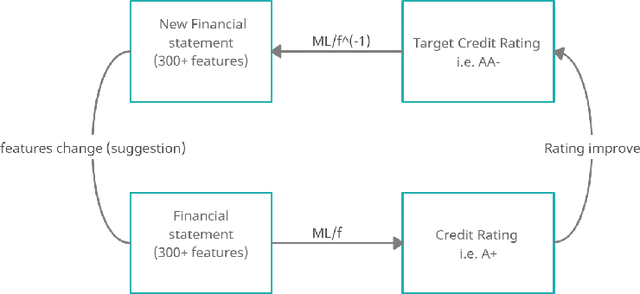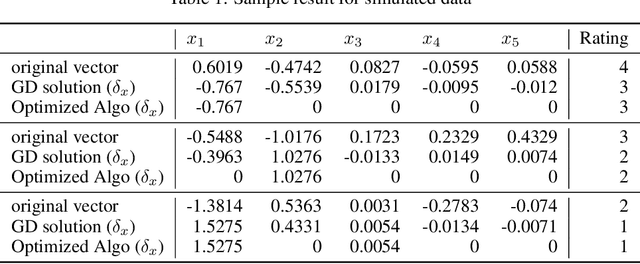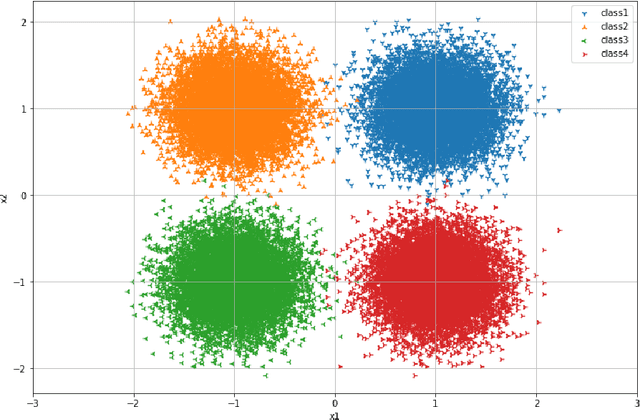A Sparsity Algorithm with Applications to Corporate Credit Rating
Paper and Code
Jul 21, 2021



In Artificial Intelligence, interpreting the results of a Machine Learning technique often termed as a black box is a difficult task. A counterfactual explanation of a particular "black box" attempts to find the smallest change to the input values that modifies the prediction to a particular output, other than the original one. In this work we formulate the problem of finding a counterfactual explanation as an optimization problem. We propose a new "sparsity algorithm" which solves the optimization problem, while also maximizing the sparsity of the counterfactual explanation. We apply the sparsity algorithm to provide a simple suggestion to publicly traded companies in order to improve their credit ratings. We validate the sparsity algorithm with a synthetically generated dataset and we further apply it to quarterly financial statements from companies in financial, healthcare and IT sectors of the US market. We provide evidence that the counterfactual explanation can capture the nature of the real statement features that changed between the current quarter and the following quarter when ratings improved. The empirical results show that the higher the rating of a company the greater the "effort" required to further improve credit rating.
 Add to Chrome
Add to Chrome Add to Firefox
Add to Firefox Add to Edge
Add to Edge